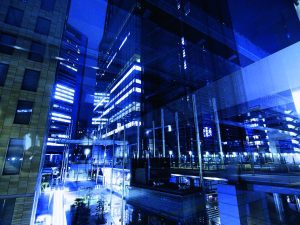For many years, engineering and operation disciplines within industrial settings were totally detached. In very simple terms the process of designing, building and operating a plant involved a series of handovers from engineers to engineers. You would design the processes, hand over to an engineering company who would design and build the plant, and the control vendor who would design and program the control system and in the end hand everything over physically to the end user to operate the plant. Under such a fractured model, accessing and maintaining the latest documentation for optimizing operational efficiency and profitability of the plant was always and continues to be a major issue if not driven by the owner and operator.
With process design software today, there is no longer the need to handover to someone who’s building the plant. All this is done via software that professionally interfaces with the design software that allows people to build the plant and automatically programs the control system. Furthermore, that design tool output serves as a “digital representation” of the plant. Once the plant is online, the digital representation interacts with the real-time data that is generated by the physical plant. At that point, the software transforms the “digital representation” into a “digital twin” that can reflect exactly what is happening in the physical plant.
Software empowered employees change the workflow dynamic
Up until recently, workers who operated key plant systems would often utilize only a narrow fraction of the wide functionality of their software. Visualization was complicated and functions were difficult to learn. Now, with more advanced and intuitive operational software, tasks can easily be accomplished without having to understand all the complex background details.
If suddenly you bring together these two aspects (engineering and operations), you can imagine that someone who sits in front of their screen sees a 3D picture of the plant showing where the pipes are, where the equipment is and if an alarm pops up, it doesn’t say I have an alarm on pump xyz, it gives a location and coordinates and someone would have to figure out on printed paper where this pump is located.
Now, instead, the 3D model comes up, says there is a pump alarm, but shows the pump on the screen in the 3D model so that you can “virtually” make your way to find where the pump is. You can virtually look at the pump and what kind of pipes are connected, whether it is a redundant pump, what kinds of valves you need to operate to separate the pump from the rest of the system. And before you send all this data onto a service engineer, he knows exactly what to do and makes his way over to the pump and follows the instructions. All the pre-work has already been done virtually and it was also simulated virtually with the final step being the execution of the physical work.
Now if you look a little bit into the future, the individual within the plant who is notified of the alarm is no longer sitting in front of a screen but is equipped with a set of virtual reality goggles that illustrate the 3D representation or digital twin of the plant. The service engineer also has his own set of goggles. In his case, he sees the real plant, but his goggles contain digital data that begins to enter his field of vision and that blends in on top of the reality he is seeing. In this instance he is experiencing augmented or “mixed” reality that helps him to accomplish his repair in a safer and more expeditious manner.
Knowledge sharing and efficiency savings
The implications of such technologies are multifaceted. First, in a more intuitive way, you can make full use of very complicated capabilities that were there before but which might not have been usable due to the complexity and degree of training required. Now, users with less training can obtain and get into some of those functionalities.
Second, software development tools have become much more sophisticated in terms of graphical capabilities, in respect to processing capabilities, and in terms of the flexibility of where the software runs.
Because of all of this, you can see tools better used, you can see people more intuitively working with equipment without necessarily doing harm to the real world and not needing to understand all of the details that are happening in the background.
Find out more information on the industry-leading portfolio of engineering and industrial software by clicking here.



